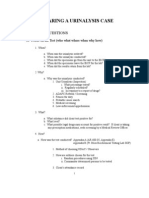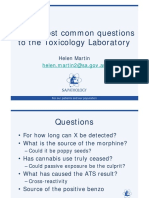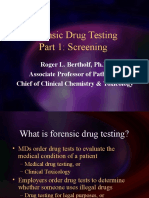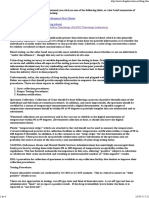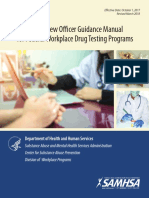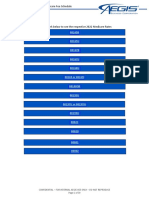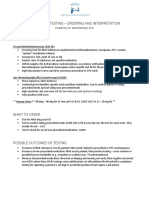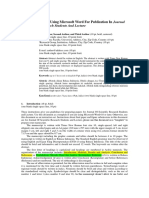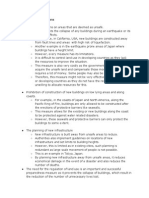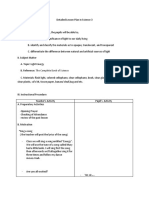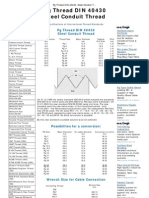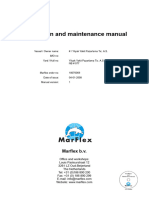Drug Testing
State(s): LOB(s):
Idaho Montana Oregon Washington Other: Commercial Medicare Medicaid
Enterprise Policy
Clinical Guidelines are written when necessary to provide guidance to providers and members in order to outline and clarify
coverage criteria in accordance with the terms of the Member’s policy. This Clinical Guideline only applies to PacificSource
Health Plans, PacificSource Community Health Plans, and PacificSource Community Solutions in Idaho, Montana, Oregon,
and Washington. Because of the changing nature of medicine, this list is subject to revision and update without notice. This
document is designed for informational purposes only and is not an authorization or contract. Coverage determination are
made on a case-by-case basis and subject to the terms, conditions, limitations, and exclusions of the Member’s policy.
Member policies differ in benefits and to the extent a conflict exists between the Clinical Guideline and the Member’s policy,
the Member’s policy language shall control. Clinical Guidelines do not constitute medical advice nor guarantee coverage.
Background
Urine, serum, and breath drug testing is performed to detect the use of prescription medications and
substances of concern for the purpose of medical treatment. Confirmatory testing is an additional test
completed to verify the results of the urine or serum drug test. Urine or serum drug testing should not
routinely include a panel of all substances. The test should be focused on the detection of specific
substances of concern. The frequency of testing should be at the lowest level to detect the presence of
substances. The following are types of drug tests:
Presumptive Drug Class
These tests are used to identify possible (but not definitive) drug use or non-use, and may be
followed by a definitive test to specifically identify drugs or metabolites. All drug class
immunoassays are considered presumptive, whether qualitative, semi-quantitative, or
quantitative values are provided.
Definitive Drug Class
These tests identify possible drug use or non-use and specify the associated metabolites if
performed (not separately billable). They can be qualitative, quantitative or a combination
thereof. Definitive testing may be covered as a confirmatory test when the result of the
presumptive testing is inconsistent with the patient’s history, presentation, or current prescribed
medication plan and the result would impact medical decision making. A presumptive test is not
required prior to performing a definitive test.
Note: The category of measure utilized for this policy is a “unit.” A “unit” is defined as each individual
code utilized to capture the service of urine drug testing. G code billing is subject to unit limits (i.e., units
within the G code are counted separately).
Page 1 of 6
�Criteria
Coverage Guidelines for Drug Testing or Screening
I. Behavioral Health Treatment Programs:
Initial behavioral health treatment program assessment to determine the patient’s substance
profile and detoxification regime.
Testing is limited to 36 presumptive and 12 definitive units per year. Additional testing must
focus on specific substance of concern and may be covered to monitor substances that are not
adequately detected by presumptive testing (e.g. Fentanyl), unexpected results, or *aberrant
behavior and must be medically necessary to inform treatment decisions.
II. Pain Management Program (Non-Behavioral Health):
Initial pain management treatment program assessment to determine the patient’s substance
profile.
Testing is limited to 36 presumptive and 12 definitive units per year.
Additional testing must focus on specific substance of concern and may be covered to monitor
substances that are not adequately detected by presumptive testing (e.g. Fentanyl), unexpected
results, or aberrant behavior. Aberrant behavior includes, but is not limited to, lost prescriptions,
repeat requests for early refills, and prescriptions from multiple providers, unauthorized dose
escalation, and apparent intoxication.
III. Indications/ Inclusions
Diagnosis of altered mental status
Diagnosis of medical condition where drug toxicity may be a contributing factor
As part of a treatment program assessment to determine the patient’s drug profile, detoxification
regime and treatment adherence
Assessment before initiating medication assisted treatment
Possible fetal substance exposure or withdrawal
Subsequent testing must be medically necessary and not performed for the sole purpose of
validating observable signs of intoxication or self-reported use
IV. Documentation guidelines
Drugs or drug classes for which screening is performed should only reflect those likely to be
present, based on the patient’s documented medical history or current clinical presentation
Documentation must be patient-specific and accurately reflect the need for each test ordered
The provider that submits the claim is responsible for providing documentation sufficient to
support all services submitted on the claim form
Coding Information
All codes within this section should be reported once, per drug class, per date of service.
0007U Drug test(s), presumptive, with definitive confirmation of positive results, any number of drug
classes, urine, includes specimen verification including DNA authentication in comparison to buccal
DNA, per date of service
Page 2 of 6
�0011U Prescription drug monitoring, evaluation of drugs present by LC-MS/MS, using oral fluid,
reported as a comparison to an estimated steady-state range, per date of service including all drug
compounds and metabolites, definitive test
0051U Prescription drug monitoring, evaluation of drugs present by LC-MS/MS, urine, 31 drug panel,
reported as quantitative results, detected or not detected, per date of service, definitive test.
0054U Prescription drug monitoring, 14 or more classes of drugs and substances, definitive tandem
mass spectrometry with chromatography, capillary blood, quantitative report with therapeutic and toxic
ranges, including steady-state range for the prescribed dose when detected, per date of service
0082U Drug test(s), definitive, 90 or more drugs or substances, definitive chromatography with mass
spectrometry, and presumptive, any number of drug classes, by instrument chemistry analyzer (utilizing
immunoassay), urine, report of presence or absence of each drug, drug metabolite or substance with
description and severity of significant interactions per date of service
0093U Prescription drug monitoring, evaluation of 65 common drugs by LC-MS/MS, urine, each drug
reported detected or not detected, definitive test
0110U Prescription drug monitoring, one or more oral oncology drug(s) and substances, definitive
tandem mass spectrometry with chromatography, serum or plasma from capillary blood or venous
blood, quantitative report with steady-state range for the prescribed drug(s) when detected
0116U Prescription drug monitoring, enzyme immunoassay of 35 or more drugs confirmed with LC-
MS/MS, oral fluid, algorithm results reported as a patient-compliance measurement with risk of drug to
drug interactions for prescribed medications
0117U Pain management, analysis of 11 endogenous analytes (methylmalonic acid, xanthurenic acid,
homocysteine, pyroglutamic acid, vanilmandelate, 5-hydroxyindoleacetic acid, hydroxymethylglutarate,
ethylmalonate, 3-hydroxypropyl mercapturic acid (3-HPMA), quinolinic acid, kynurenic acid), LC-
MS/MS, urine, algorithm reported as a pain-index score with likelihood of atypical biochemical function
associated with pain
0143U Drug assay, definitive, 120 or more drugs or metabolites, urine, quantitative liquid
chromatography with tandem mass spectrometry (LC-MS/MS) using multiple reaction monitoring
(MRM), with drug or metabolite description, comments including sample validation, per date of service
0144U Drug assay, definitive, 160 or more drugs or metabolites, urine, quantitative liquid
chromatography with tandem mass spectrometry (LC-MS/MS) using multiple reaction monitoring
(MRM), with drug or metabolite description, comments including sample validation, per date of service
0145U Drug assay, definitive, 65 or more drugs or metabolites, urine, quantitative liquid
chromatography with tandem mass spectrometry (LC-MS/MS) using multiple reaction monitoring
(MRM), with drug or metabolite description, comments including sample validation, per date of service
0146U Drug assay, definitive, 80 or more drugs or metabolites, urine, by quantitative liquid
chromatography with tandem mass spectrometry (LC-MS/MS) using multiple reaction monitoring
(MRM), with drug or metabolite description, comments including sample validation, per date of service
0147U Drug assay, definitive, 85 or more drugs or metabolites, urine, quantitative liquid
chromatography with tandem mass spectrometry (LC-MS/MS) using multiple reaction monitoring
(MRM), with drug or metabolite description, comments including sample validation, per date of service
Page 3 of 6
�0148U Drug assay, definitive, 100 or more drugs or metabolites, urine, quantitative liquid
chromatography with tandem mass spectrometry (LC-MS/MS) using multiple reaction monitoring
(MRM), with drug or metabolite description, comments including sample validation, per date of service
0149U Drug assay, definitive, 60 or more drugs or metabolites, urine, quantitative liquid
chromatography with tandem mass spectrometry (LC-MS/MS) using multiple reaction monitoring
(MRM), with drug or metabolite description, comments including sample validation, per date of service
0150U Drug assay, definitive, 120 or more drugs or metabolites, urine, quantitative liquid
chromatography with tandem mass spectrometry (LC-MS/MS) using multiple reaction monitoring
(MRM), with drug or metabolite description, comments including sample validation, per date of service
0227U Drug assay, presumptive, 30 or more drugs or metabolites, urine, liquid chromatography with
tandem mass spectrometry (LC-MS/MS) using multiple reaction monitoring (MRM), with drug or
metabolite description, includes sample validation
80305 Drug test(s), presumptive, any number of drug classes, any number of devices or procedures
(eg, immunoassay); capable of being read by direct optical observation only (eg, dipsticks, cups, cards,
cartridges) includes sample validation when performed, per date of service
80306 Drug test(s), presumptive, any number of drug classes, any number of devices or procedures
(eg, immunoassay); read by instrument assisted direct optical observation (eg, dipsticks, cups, cards,
cartridges), includes sample validation when performed, per date of servic e
80307 Drug test(s), presumptive, any number of drug classes, any number of devices or procedures, by
instrument chemistry analyzers (eg, utilizing immunoassay [eg, EIA, ELISA, EMIT, FPIA, IA, KIMS,
RIA]), chromatography (eg, GC, HPLC), and mass spectrometry either with or without chromatography,
(eg, DART, DESI, GC-MS, GC-MS/MS, LC-MS, LC-MS/MS, LDTD, MALDI, TOF) includes sample
validation when performed, per date of service
80320-80377 Drug assay definitive drug testing CPT codes are covered to represent routine drug
screening based on the drug class and the method used to test the drug.
82075 Alcohol (Ethanol); Breath, definitive test
83992 Phencyclidine (PCP), definitive test
G0477 - CMS has cross walked this code to CPT code 80305
G0478 - CMS has cross walked this code to CPT code 80306
G0479 - CMS has cross walked this code to CPT code 80307
G0480 Drug test(s), definitive, utilizing (1) drug identification methods able to identify individual drugs
and distinguish between structural isomers (but not necessarily stereoisomers), including, but not
limited to GC/MS (any type, single or tandem) and LC/MS (any type, single or tandem and excluding
immunoassays (e.g., IA, EIA, ELISA, EMIT, FPIA) and enzymatic methods (e.g., alcohol
dehydrogenase)), (2) stable isotope or other universally recognized internal standards in all samples
(e.g., to control for matrix effects, interferences and variations in signal strength), and (3) method or
drug-specific calibration and matrix-matched quality control material (e.g., to control for instrument
variations and mass spectral drift); qualitative or quantitative, all sources(s), includes specimen validity
testing, per day, 1-7 drug class(es), including metabolite(s) if performed
Page 4 of 6
�G0481 Drug test(s), definitive, utilizing (1) drug identification methods able to identify individual drugs
and distinguish between structural isomers (but not necessarily stereoisomers), including, but not
limited to GC/MS (any type, single or tandem) and LC/MS (any type, single or tandem and excluding
immunoassays (e.g., IA, EIA, ELISA, EMIT, FPIA) and enzymatic methods (e.g., alcohol
dehydrogenase)), (2) stable isotope or other universally recognized internal standards in all samples
(e.g., to control for matrix effects, interferences and variations in signal strength), and (3) method or
drug-specific calibration and matrix-matched quality control material (e.g., to control for instrument
variations and mass spectral drift); qualitative or quantitative, all sources(s), includes specimen validity
testing, per day, 8-14 drug class(es), including metabolite(s) if performed
G0482 Drug test(s), definitive, utilizing (1) drug identification methods able to identify individual drugs
and distinguish between structural isomers (but not necessarily stereoisomers), including, but not
limited to GC/MS (any type, single or tandem) and LC/MS (any type, single or tandem and excluding
immunoassays (e.g., IA, EIA, ELISA, EMIT, FPIA) and enzymatic methods (e.g., alcohol
dehydrogenase)), (2) stable isotope or other universally recognized internal standards in all samples
(e.g., to control for matrix effects, interferences and variations in signal strength), and (3) method or
drug-specific calibration and matrix-matched quality control material (e.g., to control for instrument
variations and mass spectral drift); qualitative or quantitative, all sources(s), includes specimen validity
testing, per day, 15-21 drug class(es), including metabolite(s) if performed
G0483 Drug test(s), definitive, utilizing (1) drug identification methods able to identify individual drugs
and distinguish between structural isomers (but not necessarily stereoisomers), including, but not
limited to GC/MS (any type, single or tandem) and LC/MS (any type, single or tandem and excluding
immunoassays (e.g., IA, EIA, ELISA, EMIT, FPIA) and enzymatic methods (e.g., alcohol
dehydrogenase)) (2) stable isotope or other universally recognized internal standards in all samples
(e.g., to control for matrix effects, interferences and variations in signal strength), and (3) method or
drug-specific calibration and matrix-matched quality control material (e.g., to control for instrument
variations and mass spectral drift); qualitative or quantitative, all sources(s), includes specimen validity
testing, per day, 22 or more drug class(es), including metabolite(s) if performed
G0659 Drug test(s), definitive, utilizing drug identification methods able to identify individual drugs and
distinguish between structural isomers (but not necessarily stereoisom ers), including but not limited to,
GC/MS (any type, single or tandem) and LC/MS (any type, single or tandem), excluding immunoassays
(e.g., IA, EIA, ELISA, EMIT, FPIA) and enzymatic methods (e.g., alcohol dehydrogenase), performed
without method or drug-specific calibration, without matrix-matched quality control material, or without
use of stable isotope or other universally recognized internal standard(s) for each drug, drug metabolite
or drug class per specimen; qualitative or quantitative, all sources, includes specimen validity testing,
per day, any number of drug classes
NOTE: Reference lab claims may be submitted using CPT codes for quantitative testing and will be
paid based on documentation in the physician record indicating the need for each specific test and
reimbursed per contracted rate.
Experimental/Investigational/Unproven
Hair drug testing and oral fluid (saliva) drug testing are considered experimental, investigational and/or
unproven in outpatient pain management and substance use disorder treatment. This includes the
following codes:
0011U Pres drug monitor eval drugs present LC-MS/MS using oral fluid, reported as a comparison to
an est steady-state range/per date service include all drug compounds & metabolites
P02031Hair Follicle Drug Test (Hair Analysis) Exception for coverage is suspected chronic arsenic
poisoning
Page 5 of 6
�References
AMA.assn.org/ama/pub/physician-resources
CPT Code Changes for 2020, McKesson Business Performance Services, 2020
Health Evidence Review Commission (HERC) Coverage Guidance: Urine Drug Testing- Approved
8/9/2019 https://www.oregon.gov/oha/HPA/DSI-HERC/EvidenceBasedReports/CG-Urine-Drug-
Testing.pdf
NCBI.nlm.nih.gov-Appendix B Urine Collection and Testing Procedures and Alternative Methods for
Monitoring Drug Use, 2015
Appendix
Policy Number: [Policy Number]
Effective: 1/1/2020 Next review: 3/1/2022
Policy type: Enterprise
Author(s:
Depts: Health Services
Applicable regulation(s):
Commercial Ops: 4/2021
Government Ops: 4/2021
Page 6 of 6








